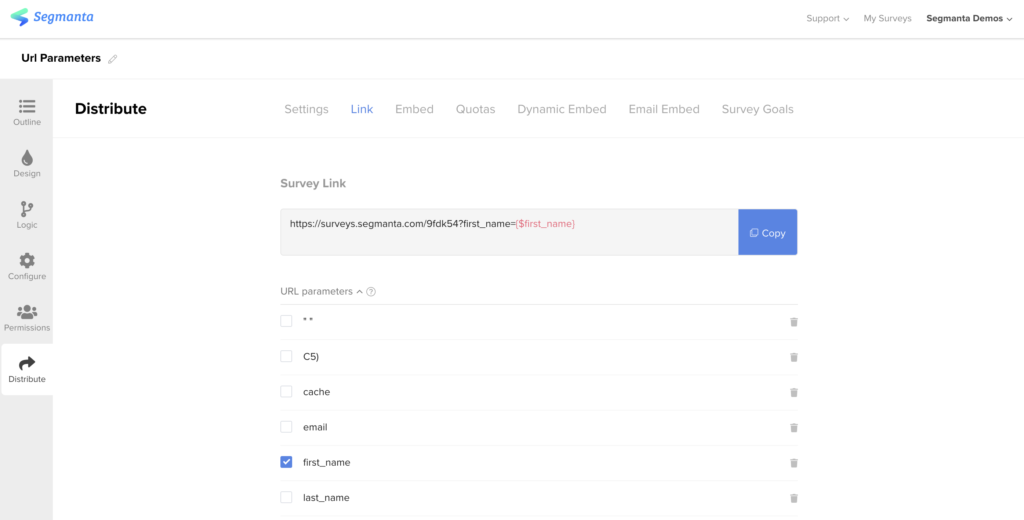How personalization can enhance your survey data
There are many ways you can personalize your survey, whether that be through design or using logic & flow features. One of the ways to personalize your survey further is by using URL Parameters.
URL parameters are variables in a query string that send information to a server. In other words, by attaching this information to a survey URL you can pass “known” information into your survey.
Known information you might want to pass into a survey could include:
- Respondent’s name, email address, customer ID
- Traffic source indicating where your respondent navigated to your survey from
- Customer subscription type, loyalty membership level or any indicator to provide context to your respondent’s relationship with your brand

As you can see, any information you might already know about your survey respondents or information that you already know when creating your link can be added to your survey URL and be passed into your survey.
3 reasons why you should use URL parameters when distributing a survey
1. Survey Personalization
You can use URL parameters to customize content on any page of your survey. For example, you could add the customer’s name into your survey link as a parameter and have your survey’s welcome page greet the respondent by name.

Running a satisfaction survey? Ask your customer a question regarding their satisfaction with their current subscription tier. Instead of using vague wording, be more explicit about their current tier by using the value passed via your survey URL.
By combining URL parameters and survey logic, you can also show or hide survey questions based on the values in your URL. For example, only respondents who come from a Facebook ad could be shown an ad recall question asking them to describe the visual in the advertisement they clicked on.
2. Survey Analysis
URL parameters are a great way to supplement your survey analytics. Rather than requiring a respondent to answer questions about information you clearly already know about them, pass this information directly into your analytics dashboard allowing you to analyze based on this known information.
For example, if you’ve already collected gender data in your database, save the respondent time and maximize your completion rates by passing this data into your survey. This would allow you to analyze correlations between satisfaction and gender without requiring the respondent to fill this information out again.

3. Data Integration
Using a consumer ID or other CRM identifier, you can match survey responses back to customers or leads in your database. URL parameters enable a relatively simple means of enriching your consumer profiles in order to enable personalization.
Information collected via URL parameters can also be sent in real time to the analytical tool/s of your choice, such as Google Analytics. By integrating the survey data, you can:
- Analyze the survey events along with other data collected
- Easily track survey traffic so you can identify where and how respondents are reaching your survey
- Examine a visitor’s website journey from start to finish
- Track and measure the campaign sources and content
The bottom line
Whether you’re looking to personalize your survey for each respondent or track the source of your leads in order to identify where the traffic is coming from, Segmanta’s URL parameter tool gives you the power to integrate your database information with your survey and integrate your survey data with other databases and analytical software all on your own. Armed with this data, survey creators can maximize completion rates and marketers can measure advertisement performance, personalize marketing communication, and reach out to leads at the moment they are most likely to convert in order to ultimately drive growth for your business.

